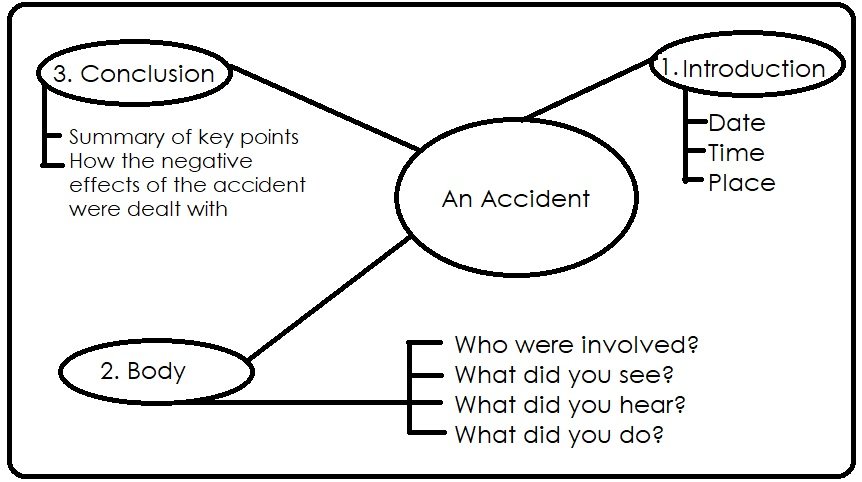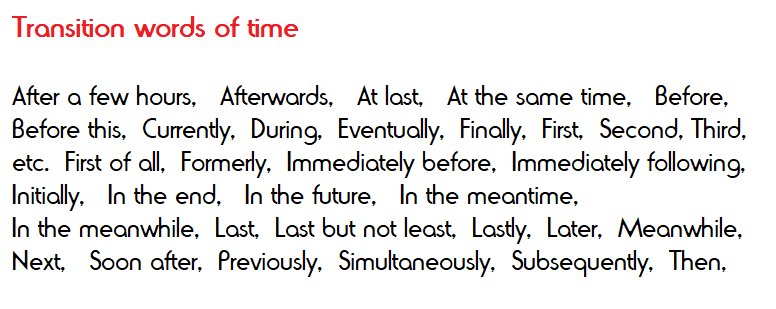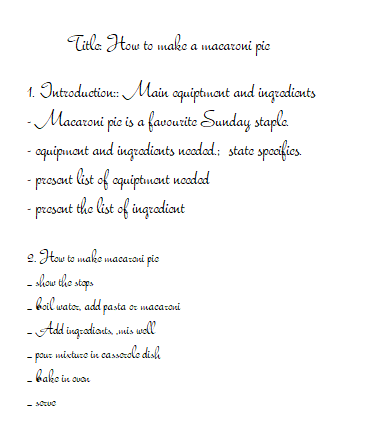Factual writings are based on facts and figures. It is what you would generally find in a newspaper or a report. Such writings hardly ever contain personal views by the writer.
Informative essays can be factual in essence where the main purpose is to educate the reader on a topic. The writer also can define a term, compare and contrast something, analyze data or provide a how to. Most of these writings are classified under expository writing.
HERE ARE WHAT YOU INCLUDE IN A FACTUAL WRITING.
- A topic title that shows what you will write about.
- Ideas are grouped into paragraphs and paragraphs have sub-headings.
- All facts are truthful; so paragraphs have important information.
- Use formal language, use technical or scientific words.
REPORT WRITING
A report is a spoken or written account of something that was observed, heard, done, or investigated. Some types of reports are informatve, field-trip, Newspaper, incident/accident, eye-witness.
Reports are expository writing. When you write a report you write it to do one or more of the following:
- explain
- describe
- inform
- directs
- clarifies
- defines or instructs
When you write a report you write it using a formal tone. All the information in the report is written in a logical sequence.
A report has an introduction, a body and a conclusion.
The Introduction includes the main idea. Here you will write the reason you are writing the report. The introduction of a report includes: Date, Time, Place, Topic, Who.
The body of the report is made up of paragraphs that support the main idea. It includes the people involved, events, and actions taken by individuals.
The conclusion of the report sums up the report, all the facts stated in the report in one or two sentences. It would include a summary of key points. You may also state how the event affected the people ivolved.
PLAN YOUR REPORT – BEGIN WITH A CLUSTER.

SAMPLE REPORT 1: THE WASP STING
On Tuesday, September 11th, 2018 at 12:30 p.m., at High Street Primary School an incident occurred.
An infant child, Ingrid Moore, was left alone playing in the field while the rest of her classmates went to their evening class. Mrs. James, the infant’s teacher noticed the child was missing and ask me, Jillian Lawrence, a standard two student to bring the infant back to class.
I then search the playfield thoroughly but could not find the infant. She was not on the swings or playing in the sand pit. So I decided to look for her along the eastern wing of the school, the school garden. There I found Ingrid Moore. She was sitting near a watering can, holding a swollen hand, and crying.
When she saw me, she explained that a wasp had stung her and she was in a lot of pain. Her hand was swelling. She also explained that she was allergic to the sting and needed immediate attention. I rushed her to the principal’s office who called the class teacher. Mrs. James then rushed Ingrid to the nearest Health Centre, one miles away. Ingrid was treated by a doctor who give her loratadine to reduce the itching and swelling. Ingrid parents collected her at the Health Centre. Mrs. James explained to her parents what had happened.
The following day, the principal, Mr. Springer had a workman remove a huge wasp nest under a garden bench. He also called assembly and warned all the students about being careful with wasps and even bees. He also encourage students to report any sighting of any nest on the school compound.
SAMPLE REPORT 2: THE STOLEN LUNCH KIT
On the 21st of June, 2019, at 2:30 p.m., an incident between Leon Garcia and Darius Smith took place at the Poolside Primary School.
A few minutes after the bell rang and classes were dismissed, Leon Garcia, a standard 3 student, and I, Remy Roland, noticed that he left his lunch kit back in his class. Hurriedly, we ran to his class and Leon collided with Darius Smith, another classmate and the last student to leave the classroom. Darius was not pleased and threaten Leon with a beating. Leon begged for an excuse and explained it was an accident. He further explained that he just returned to retrieve his lunch kit.
Then Leon notice that Darius had his lunch kit in his hand. He immediately enquired about the lunch kit, but Darius questioned Leon about his accusation. Again, Leon apologized but insisted he can prove the lunch kit was his. However, Darius would not and told him he was taking the issue to the principal at once.
Once we were in the principal’s office, Darius accused Leon of hitting him purposely. Leon denied the accusation, but indicated that it was Darius at fault. The principle insisted that Darius show him the lunch kit. To that, the principal noticed Leon’s name written on the inside of the kit. Leon was excused and Darius was ask to call his parents who were to pick him up soon into the office. Darius was warned and and asked to apologized to Leon in front of the school the next day.
The following day, Darius apologized to the Leon in front of the entire school during assembly. The principal warned the students that he does not tolerate lying and stealing and if any student was caught doing any of these they would be disciplined.
WORKSHEETS:
Practice Guide to Writing a Report
Practice adding transitional words in a report

Types of Expository Writing
The following are expository writings you should know. Those that:
- Explain Process
- Cause-and-effect Relationship
- Compares And Contrasts
- Problem and Proposes Solutions
EXPLAIN PROCESS
A writing that explains a process: shows how something works or how to do something. Example, ‘How to grow a tree’. When you are writing a process, you must first understand the steps involved in the process, then present these steps in order.
Look at the short film below. Then write a paragraph on “How to grow a tree“. Share your writing with a friend, parents, or in class.
Process Writing involves breaking the task into smaller component parts. Each part shows how a task is completed, one step at a time. This helps the readier to perform a difficult task because it is broken up into smaller steps that is easier to do.
You should know by now that you should plan the steps. This writing, like all writing, have a prewriting phase and a writing phase. During the prewriting stage, you organize the ideas in a sequence for the composition. You must organize your thoughts in steps. How do you do this? First, select a topic and brainstorm to decide the steps. Next, jot down your ideas on the topic. Finally, organize your ideas according to main ideas and their details. You have completed the prewriting stage.
The writing phase now is just writing your ideas which you had dutifully written during the prewriting stage. If your prewriting phase was done well, you will find this phase fulfilling and worry-free. Write the the rough draft. Turn your ideas into sentences. Make sure your ideas are connected. Use transitional words or phrases to connect your ideas.
proofread and edit your writing. Reading your writing aloud helps you identify errors in grammar and spelling, and sentences formation. Having someone else read it aloud for you also helps. You may have to rewrite your writing making the corrections where necessary.
TRANSITION WORDS OF TIME
Words like, “but“, “so” and “because“. They show the reader the relationship between phrases, sentences, or even paragraphs. They connect ideas and thoughts.
Some more examples you should use in process writing are: when, before, soon, first, second, finally.

A SAMPLE PROCESS ESSAY
Sample Prewriting:

Sample Writing:
HOW TO MAKE MACARONI PIE
In Trinidad and Tobago, the macaroni pie is a favourite Sunday staple. Today, you will learn how to make a basic macaroni pie. First of all, gather the necessary equipment and ingredients. You will need the following: a large casserole dish, a mixing spoon, a colander, a large mixing bowl, a deep pot, a measuring cup, measuring spoons, and a brush. Also, you will need the following ingredients: 500 grams of pasta or macaroni, 4 cups of water, a half cup of milk, one pound of grated cheese, an egg, one tablespoon ketchup, some of your favourite seasoning such as parsley and paprika, and two tablespoon of butter. Once you have all these you can begin.
First, pour the water in the deep pot and place on the stove, over medium heat. Turn the fire on and boil the water for 10 minutes, then add the pasta or macaroni. Cook the macaroni according to the instructions on the package. When you are done, strain the macaroni or pasta and place it in a large mixing bowl. Second, add the butter, one tablespoon ketchup, your favourite chopped or powder seasoning, half the cheese, the egg and the milk. Mix the ingredients thoroughly with a large spoon. Third, grease the casserole dish with the brush and pour the mixture into the dish. Following this, sprinkle the rest of cheese on the top. Four, garnish with with chopped parsley and paprika. Finally, place the casserole dish into the oven and bake for about 30 minutes. When it is done remove to cool before you cut and serve.
A simple example:
Exercise:
Write a paragraph explaining what you before you go to school. Share your paragraph in class.
Graphic Organizer for Expository Writing – Process
CAUSE-AND-EFFECT RELATIONSHIP
A writing that shows a cause-and-effect relationship. In such a writing something that happened caused an event or condition to happen. If you got sick, you might want to know what caused it. Example, of a cause-and-effect is ‘Why you should eat healthy’. In writing a cause-and-effect, you gives reasons and explanations for events, conditions, or behaviour. Therefore, you identify the event, or condition; and ask yourself questions such as: who or what is responsible? who or what was affected? You then list and explain the causes and effect.
Look at the short film below. Then, in one paragraph write what happened and explain its causes.
Graphic Organizer for Expository Writing – Cause and Effect
COMPARES AND CONTRASTS
A writing that compares and contrasts. Such writings are carefully written to explain similarities or differences between items or events. A compare and contrast essay should be carefully constructed around a thesis statement (a statement that tells the reader what is going to be explain).
Below is a film comparing day and night. Observe what happens in the film closely. Then, in a sheet, list the similarities and difference between “night” and “day“
Graphic Organizer for Expository Writing – Compare and Contrast
PROBLEM AND PROPOSES SOLUTIONS
A writing that identifies a problem and proposes solutions. Example, how to overcome depression.
Listen the stories below. Then write down the problem and possible solution in for story.
Problem and propose Solution
